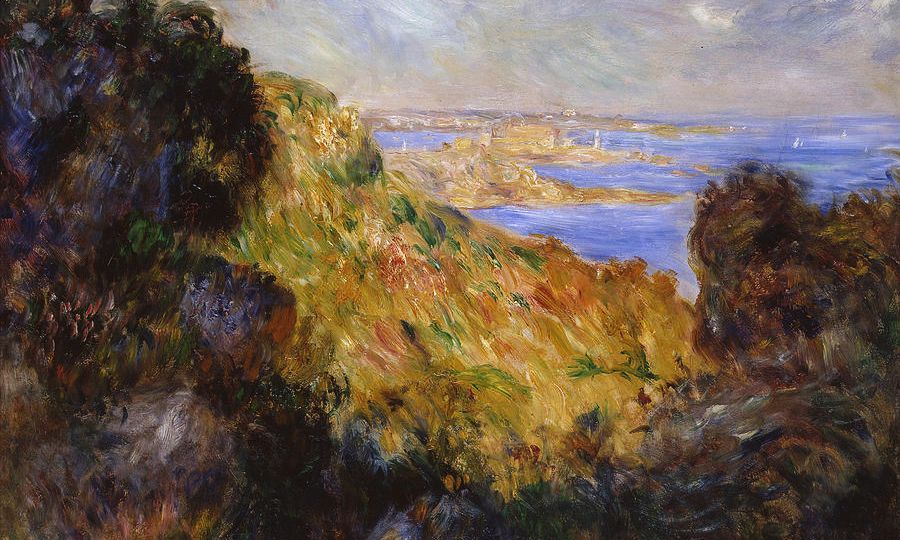A painting by Renoir thought to be a Mediterranean landscape could actually be a painting of Guernsey, art experts on the island believe.
The painting, titled Bay of Salerno or Mediterranean Landscape (1881), is currently on loan from the Musée d’Art Moderne André Malraux in Le Havre to the exhibition Renoir on Guernsey 1883 at the island’s Candie Museum. The show, which is the most important mounted on Guernsey for more than three decades, marks 140 years since the artist visited the island.
As soon as the painting arrived on Guernsey, an assistant curator at Guernsey Museums, Sophie Brehaut, recognised the landscape as the Bay of St Peter Port on the island’s east coast, painted from the area near the Doyle Momument at Jerbourg.
David Ummels, the founder of Art for Guernsey, who curated the show in partnership with Guernsey Museums and the Musée des impressionnismes Giverny, says: “The landscape was so clearly local that she first thought the date on the paperwork was a typing error.
“We began by comparing it to other 19th-century artworks in the collection of Guernsey Museums, then looked at the land itself.” They found that the painting closely matched the contours of the landscape and included landmarks such as a local lighthouse.
Ummels adds: “When Renoir was in Guernsey he painted mainly at Moulin Huet Bay to the south of St Peter Port. Walking back along the cliff path to the house where he was staying, he would have passed the spot where we believe this work was painted. The palette of the work is also very similar to most of the Guernsey Renoirs.
“In an interview with his agent the year before he died, Renoir referred to the good times he had on Guernsey in 1881, when the date was in fact 1883, so it is possible to see how confusion could arise about the dates. We have made an approach to Le Havre about our research and they have generously invited us to present our findings.”
Hundreds of people have already visited the Renoir exhibition which runs until 15 December.
The show features ten works by Renoir, including loans from the National Gallery, the Musée D’Orsay, the Cincinnati Art Museum and from international private collections, some of which are returning to the island for the first time since they were painted.
The exhibition emphasises the importance of the painter’s stay on Guernsey at what is now believed was a turning point in his career. Ummels says: “He was going through a dry period in the early 1880s, questioning his ability to paint and draw. He planned to come to Guernsey for a short holiday but was captivated by the changing light on the island and stayed for several weeks.
“He was fascinated by the bathers at Moulin Huet Bay, at how uninhibited people were, swimming naked or in light costumes, getting changed behind rocks. Following his visit to the island, he began to combine nude figures with Impressionist landscapes, so we believe it was a career-changing moment.”

